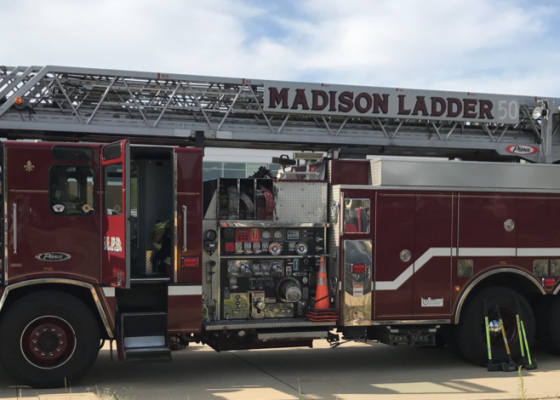EMS
E-FAST Ultrasound Training Curriculum for Prehospital Emergency Medical Service (EMS) Clinicians
DOI: https://doi.org/10.21980/J8S060By the end of these training activities, prehospital EMS learners will be able to demonstrate foundational ultrasound skills in scanning, interpretation, and artifact recognition by identifying pertinent organs and anatomically relevant structures for an E-FAST examination. Learners will differentiate between normal and pathologic E-FAST ultrasound images by identifying the presence of free fluid and lung sliding. Learners will also explain the clinical significance and application of detecting free fluid during an E-FAST scan.
Small-Scale High-Fidelity Simulation for Mass Casualty Incident Readiness
DOI: https://doi.org/10.21980/J84S8SThe learners will (1) recognize state of mass casualty exercise as evidenced by verbalization or triaging by START (Simple Triage and Rapid Treatment) criteria, (2) triage several patients, including critically ill or peri-arrest acuities, according to START criteria, (3) recognize the need to limit care based on available resources, as evidenced by verbal orders or communication of priorities to team, and (4) limit emergency resuscitation, given limited resources, by only providing treatments and employing diagnostics that do not deplete limited time, staffing, and space inappropriately.
Simulated Mass Casualty Incident Triage Exercise for Training Medical Personnel
DOI: https://doi.org/10.21980/J82H1RBy the end of this exercise, learners should be able to (1) recite the basic START patient categories (2) discuss the physical exam signs associated with each START category, (3) assign roles to medical providers in a mass casualty scenario, (4) accurately categorize patients into triage categories: green, yellow, red, and black, and (5) manage limited resources when demand exceeds availability.
Periodic Refresher Emails for Emergency Department Mass Casualty Incident Plans
DOI: https://doi.org/10.21980/J8C05WThis curriculum is intended to maintain a knowledge base of MCI processes to mitigate degradation of necessary knowledge between hands-on MCI training.
A Model Curriculum for a Helicopter Emergency Medicine Services (HEMS) Rotation for Resident Physicians
DOI: https://doi.org/10.21980/J8GP97The primary objective of this course is to present a standardized curriculum which allows learners to gain understanding of HEMS systems and retrieval medicine while practicing safety in the aviation environment.
A Simulation-Based Course for Prehospital Providers in a Developing Emergency Medical Response System
DOI: https://doi.org/10.21980/J82053This curriculum presents a refresher course in recognizing and stabilizing an acutely ill patient for prehospital providers practicing in a low/middle-income developing EMS system.
A Simulated Scenario to Improve Communication Skills of Residents Providing Online Medical Command of Emergency Medical Service Providers
DOI: https://doi.org/10.21980/J8SK8MBy the end of this simulation, learners will be able to: 1) discuss appropriate medical command instructions for pediatric cardiac arrest; 2) describe alternative methods to obtain weight-based dosing of pediatric critical care medications, if Broselow tape is unavailable; 3) identify need for a definitive airway in a pulseless patient without interruption of chest compressions.
Identify need for rapid intraosseous access in a pulseless pediatric patient; 4) describe the indications for helicopter transfer in a critically ill child.
Implementing the Stop the Bleed Campaign in a University Community
DOI: https://doi.org/10.21980/J84D0ZThe main objective is to implement a system to use available resources of the Stop the Bleed campaign to widely educate members of the university community in the utilization of multiple compression techniques including direct pressure, tourniquet application, and wound packing. Additional course objectives include using the Stop the Bleedsm campaign to teach participants how to fit into the emergency response team as the immediate responder and the identification of life-threatening bleeding.
Prehospital Cardiac Arrest Management Simulation
DOI: https://doi.org/10.21980/J8V057At the end of this simulation learners will be able to: 1) Perform team-focused CPR using effective leadership and communication skills during prehospital resuscitation. 2) Employ high-quality CPR with an emphasis on compressions and early defibrillation. 3) Demonstrate appropriate airway management utilizing an oropharyngeal airway and bag-valve-mask, blind-insertion airway device, and/or endotracheal intubation during cardiac arrest. 4) Recognize and appropriately defibrillate pulseless ventricular tachycardia and ventricular fibrillation. 5) Formulate an appropriate differential diagnosis for pulseless electrical activity.
A Model Curriculum for an Emergency Medical Services (EMS) Rotation for Emergency Medicine Residents
DOI: https://doi.org/10.21980/J8DD0FThe aim of this curriculum is to provide a robust learning experience for EM residents around prehospital care and EMS that fulfills the ACGME requirements and which can be easily replicated and implemented in a variety of EM residency training programs.

